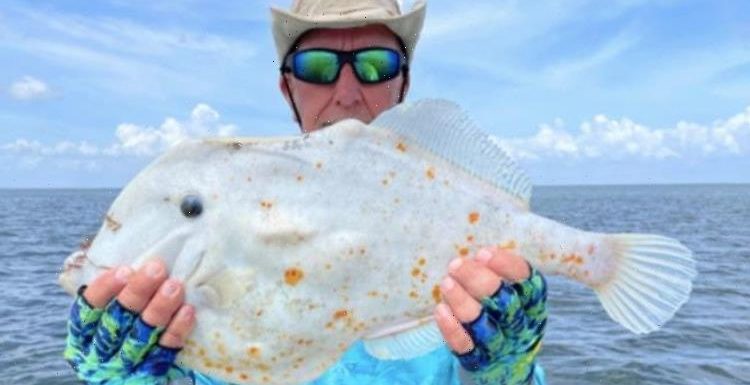
Jellyfish: Possible new species discovered by diving team
We use your sign-up to provide content in ways you’ve consented to and to improve our understanding of you. This may include adverts from us and 3rd parties based on our understanding. You can unsubscribe at any time. More info
Tom Bosworth was fishing with two friends on March 31 when he caught the strange-looking fish. But the image of the bizarre creature was only recently shown to the public. It has now been identified as an orange filefish, also called an aluterus schoepfil, the Florida Fish and Wildlife Conservation Commission (FFWCC) confirmed in a Facebook post on August 27.
Mr Bosworth said he remembers thinking: “What the heck is that?”
He added: “There are 200 species of fish out in Tampa Bay and that’s one of the stranger ones I’ve ever caught.”
Mr Bosworth said that he was about to pack up his gear and leave before making one final catch that day.
He said: “We were about ready to call it quits for the day.”


When he was making his last attempt he felt a tug on his line, but he thought that his catch was actually a plastic bag.
He said he remembered thinking: “OK, I’ll pull the trash out today.”
But when he reeled in the line, he realised it was in fact not a plastic bag but a bizarre white fish covered in specks of orange.
He added: “The three of us looked at it and went – ‘what is that?

“It’s certainly one of the most interesting fish I’ve ever caught.”
The three friends took some pictures with the fish, which looks to be around 22 inches long, and then threw it back into the bay where it then swam away.
After he caught the fish, Mr Bosworth got in touch with the FFWCC so that they could identify the species of the tortilla fish.
But this is not the first time that someone has got in touch with them about this.
According to the FFWCC, they get about three pictures of orange filefish a year with someone asking the same thing that Mr Bosworth did.
DON’T MISS
Type 2 diabetes: The diet that could can reverse a third of cases [REVEAL]
Stroke: The lifestyle habit increasing your risk of the condition [ANALYSIS]
New York floods: Residents stranded as water rips through apartments [REPORT]


It uses this by diving into a nearby crevice or hole and raising its rigid dorsal spine, which is a thin, antenna-like protrusion at the top of its head.
This allows the fish to hide out in the hole until a predator passes.
But it was lucky the three friends threw the fish back in the sea, as orange filefish have tough, leathery skin with not very much meat on them so they do not taste very nice.
The fish typically live in seagrass beds, where they graze on algae and other vegetation and they can be found on both sides of the Atlantic Ocean.
Source: Read Full Article